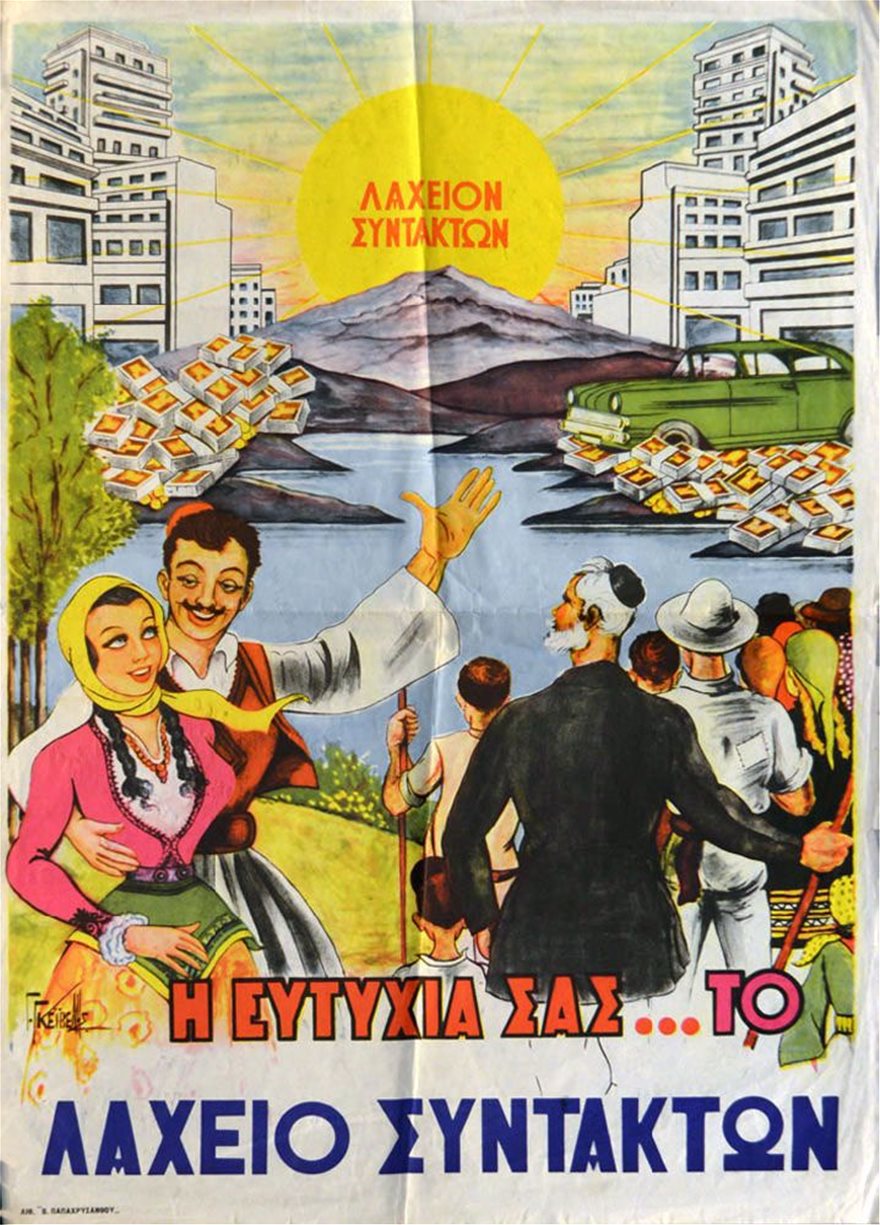 The series of matchboxes “State Lotteries” was released in 1981. It consisted of 10 paper matchboxes made by VELPEX. It advertised all state lotteries such as “Lahiko (Popular)”, “Ethniko (National)” and “Kratiko (State)”, while on the back it carries various slogans. Its circulation was: in the first type were released 15 million copies and in the second type 5 million copies. It is one of the rare series of matches.
The series of matchboxes “State Lotteries” was released in 1981. It consisted of 10 paper matchboxes made by VELPEX. It advertised all state lotteries such as “Lahiko (Popular)”, “Ethniko (National)” and “Kratiko (State)”, while on the back it carries various slogans. Its circulation was: in the first type were released 15 million copies and in the second type 5 million copies. It is one of the rare series of matches.
Greeks are considered among the top gamblers in the world. From antiquity they played games of chance, like “Chessmen” or “heads or tails”, to bet on luck. In the course of time they “discovered” many games, but also the lotteries which in the course of events were adopted by the state and legalized. Mainly because the state found that it could make as much money as it wanted from the legalization of gambling.
In Greece in the middle of the 19th century, the Archaeological Society, in its attempt to salvage as much as it could from the ancient ruins exposed to the ignorance of the Greeks and the robbery of foreigners, was forced to resort to the patriotism of rich Greeks with various lotteries, such as “House Lottery”, where the lucky one won a house.
However, the first official lottery in the history of the modern Greek state was issued by decree of King George I, on November 19, 1874. It is the lottery that aimed to save resources for archaeological excavations.
The success of the lottery was great and so the Archaeological Society with the resources it acquired, began the excavations of the Dionysian Theater and the Stoa of Attalos. It cost 3.30 drachmas and gave to the first lucky one 22,000 drachmas.
Thus began the history of lotteries in Greece and continues to evolve…
“New Year lottery” is now a tradition, also known as the “State Lottery”, established in 1967, to replace the “Authors Lottery”. It is released once a year, in December, and draws the last day of the year.

